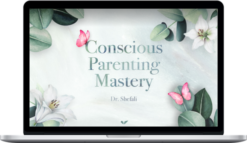NACD – TSI: Focused Attention: An Efficacy Study for Adults
$399.99 $55.80
»Instant Delivery
Description
NACD – TSI: Focused Attention: An Efficacy Study for Adults
Description Of TSI: Focused Attention: An Efficacy Study for Adults
Problems with auditory figure-ground processing—understanding speech in background noise—is a common complaint of adults. The problem appears to increase as we age. As part of its TSI-Targeted Sound Intervention®, NACD created the TSI: Focused Attention program in 2009 to help address figure-ground problems in children.
An initial field study (TSI – Focused Attention Field Study Report) and an analysis of our initial data as our clients used the program (TSI Report of Data) supported the program’s effectiveness in increasing attention and focus in children, especially as it relates to the auditory environment and being in the presence of distracting sounds.
The current study was intended to look at the effectiveness of using TSI: Focused Attention with adults whose main complaint was difficulty hearing and understanding when there is background noise.
Method
Fifteen participants completed the study. NACD client families were contacted about the study, so participants were either parents or grandparents of children involved with NACD. Criteria for inclusion into the study included:
- Age 40 or older
- Complaint of figure-ground processing problems, with or without a documented hearing loss
Figure-ground processing problems were explained to potential candidates as concerns related to processing, hearing or listening when there is background noise.
Participants were provided with a TSI: Focused Attention program and headphones. They were instructed to listen twice per day, 5 days/week, for a total of 24 weeks. Pre- and post-testing included a speech-in-noise test and rating scales.
Participants were divided into two groups:
- Hearing loss—either documented or suspected but never tested (N=9)
- No hearing loss (N=6)
Regardless of grouping, all participants used the program the same way and received the same instruction and testing. The speech-in-noise test administered was an informal assessment created by NACD. It consisted of a CD of 20 words spoken in quiet (to serve as a comparison), randomly alternated with 20 words spoken in noise. Listeners were asked to repeat each word they heard. In addition, participants were asked to rate eight listening/processing skills 0-10, with 0 meaning they had no difficulty with that task and 10 meaning they had the greatest difficulty.
Discussion
Results suggest that the normal hearing adults who experience difficulty with figure-ground processing may benefit from auditory training using TSI: Focused Attention. Adults who have issues with figure-ground processing due to hearing loss may be less likely candidates for the program.
One factor that the scores of the speech-in-noise noise test do not reflect is the accuracy—or, more aptly, the degree of inaccuracy—of incorrect responses. In many cases, some responses on the post-test were incorrect, yet closer to the correct answer than they were on the pre-test. If scores could reflect improvement in the accuracy of incorrect responses, the results would have reflected more change than they did only looking at correct vs. incorrect.
Although the numerical values in the tables in the Results section are interesting, perhaps even more significant are the comments made by the listeners about their perception of functional change with use of the program (see Appendix 1). Even listeners with hearing loss commented on how they felt their listening skills had improved. So test scores should be interpreted with caution, as the scores on the tests could be influenced by a number of factors.
Some participants admitted that on the functional rating questionnaire they may have been thinking about the questions differently on the post-test compared to the pre-test. Others felt certain that for both the speech-in-noise test and the post functional questionnaire, they were more aware of their own skills and efforts and may have tried harder. A complete list of quotes and comments can be found in Appendix 1.
Besides the scores and listeners’ comments about change, other outcomes were also worth mentioning. Two of the participants reported that family members wanted to do the program because of the change they noticed in the listener. In addition, because of their positive experience with TSI: Focused Attention, 14 of the 15 participants wanted to go on to participate in the second research study, which looked at the effectiveness of TSI: FA2 for adults, a language-based figure-ground program.
The one participant who declined participation in the second study said she only did so due to the logistics of her current schedule. Additionally, 100% of participants who responded to the question said they enjoyed doing the program; most felt they benefited from doing it; and most would recommend it to someone else.
Conclusion
It is often the case that efficacy studies such as this raise more questions than they answer. For this reason, almost all “conclusion” sections include the statement, “More research is needed…” And we concur with that thought, especially in light of the small number tested in the current trial. At the same time, understanding the limitations of the current study, we suggest that the results imply that TSI: Focused Attention can benefit adults who experience difficulties with auditory figure-ground processing, and that adults with normal hearing are better candidates for the program than those with hearing loss.
More courses from the same author: NACD
Delivery Policy
When will I receive my course?
You will receive a link to download your course immediately or within 1 to 21 days. It depends on the product you buy, so please read the short description of the product carefully before making a purchase.
How is my course delivered?
We share courses through Google Drive, so once your order is complete, you'll receive an invitation to view the course in your email.
To avoid any delay in delivery, please provide a Google mail and enter your email address correctly in the Checkout Page.
In case you submit a wrong email address, please contact us to resend the course to the correct email.
How do I check status of my order?
Please log in to HealingCourse account then go to Order Page. You will find all your orders includes number, date, status and total price.
If the status is Processing: Your course is being uploaded. Please be patient and wait for us to complete your order. If your order has multiple courses and one of them has not been updated with the download link, the status of the order is also Processing.
If the status is Completed: Your course is ready for immediate download. Click "VIEW" to view details and download the course.
Where can I find my course?
Once your order is complete, a link to download the course will automatically be sent to your email.
You can also get the download link by logging into your HealingCourse account then going to Downloads Page.
Related products
Total sold: 3







